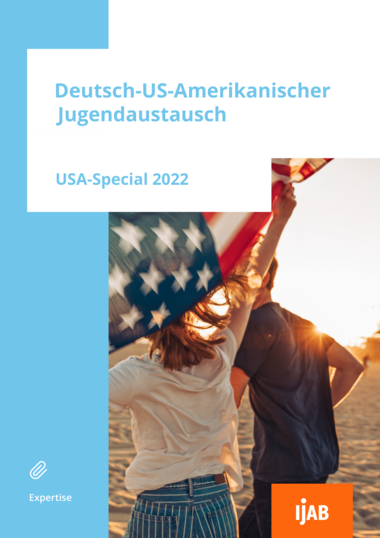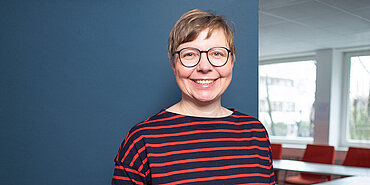How it all began
The youth projects between Offenbach and reservations in South Dakota, which are described below, initially sound like the result of a series of coincidences. When the two Offenbach youth workers Michael Koch and Claudia Weigmann-Koch spent a summer with the Dene First Nation People in the northern part of the Canadian province of Saskatchewan, just before they flew home their attention was caught by a leaflet calling for the exoneration of American Indian Movement activist Leonard Peltier, who had been imprisoned in the US for 24 years. That same night, they decided to set up the organization Tokata-LPSG RheinMain e. V. to support this prisoner and other Indigenous youth, cultural, and human rights projects. While working on their project, the two youth workers met Peltier’s cousin, himself a youth worker on the Pine Ridge Reservation in South Dakota. They soon came up with the idea of collecting musical instruments and equipment for the young people on the reservation and donating them so they could set up a rock band and Hip-Hop production set. On a visit to the reservation in 2002, the head of the local youth center suggested handing over the donation together with a group of youngsters from Germany. Back in Offenbach, the idea proved popular in music and human rights circles as well as with the city of Offenbach’s youth services committee. Another important cooperation partner was found in the form of the organization Arbeit und Leben Hessen. World-famous rock and blues musicians[1] in the US and England found out about the project and decided to support the fundraising and youth exchange campaign, which took place for the first time in 2004, by holding charity concerts. This marked the start of an international youth work project that continued until 2017 and regularly brought together young Indigenous peoples of America and Germans.
Altogether 110 young people from the Rhine-Main region and over 200 young Indigenous peoples of America took part in seven trips to the US and three projects in Offenbach. Instruments and other music equipment worth over $ 50,000 were donated as part of the exchange activities, enabling local kids to make rock and rap music whenever they want.
Different realities as a conceptual basis
The Offenbach team already had several years’ experience in international and intercultural youth work, including collaborations with Arbeit und Leben Hessen. A project in the US, however, and specifically with Indigenous peoples of America, was uncharted territory for everyone. But the trips in 2000 and 2002 as well as their prior experience with voluntary human rights work gave the youth workers sufficient foreknowledge of the living conditions, life perspectives, and interests of the young residents of the Pine Ridge Reservation, which they were able to draw on for their work. Social workers and teachers on the reservation had also engaged in an active dialogue with the Offenbach team since 2002. The Pine Ridge Reservation[2] represents the territory allocated by the US government to the Oglala Lakota people in South Dakota in the late 19th century.
The reservation is considered one of poorest counties in the US. For young people, this means growing up with poverty, unemployment, lack of perspectives, racial discrimination, and undersupply of basic services. In the 1970s, People on the Pine Ridge Reservation staged mass protests against the continued repression and discrimination. It was also the site of civil war-like turmoil and fighting sparked by a corrupt Oglala tribal leader, who terrorized his own people with the help of state institutions.[3] Together with the traumatic consequences of centuries of colonization, genocide, and ethnocide,[4] it is hardly surprising that in many young Indigenous people this manifests psychologically in the form of (self-)destructive violence.
Meanwhile, there is also enormous potential for creativity, artistic skill, and a commitment to sport. Whether rock or Hip-Hop, dance, painting, media productions or sculptures, horse riding, basketball or track and field, sport and culture have always been an important means for many young Indigenous peoples of America to express their strength and resilience. So, it seemed an obvious decision to design the program for the youth exchange along these lines, in the knowledge that music, media, and sports are among the top leisure activities of young Germans, too.
From project development to implementation
During the development phase of the project, various methodical elements of experience-based youth work were considered: international youth work, youth culture work, political education, sport, adventure education, media education, and group work.[5] These elements produced an interesting mix of workshops, project visits, presentations, sports activities, discussions, and excursions, with each tour taking place under a different thematic focus (for example Save Mother Earth, or Native Lives Matter). During the two-week-long activities, approximately 28 young participants completed an action course lasting up to 16 hours each day. In their spare time, the young participants exchanged ideas on all kinds of subjects such as fashion and music, dreams for the future, sport and movies, friendship, and life in their respective home countries.
Meetings with a lasting impact – on both sides
The emotionally charged moments occasionally experienced during the exchange prompted the German project participants, in particular, to take a closer look at the realities of Indigenous populations. Many participants incorporated their experiences and knowledge in school projects and exams, or later in their college essays and theses. Some became involved in human rights work, while others kept in touch for years via social media and later even studied in the US. Similar observations were made among the young Lakota. Some later came to Germany, participated in collaborative projects, and visited their German friends. Others took part in exchanges in the US over a period of several years, later becoming involved in local youth centers as volunteers.
Requirements for US-German cooperation
While the overall concept and its versatility were undoubtedly key to the success of the projects, other factors also played a role. The projects were carefully prepared in advance. Not only did the Offenbach team have a sound knowledge of US-American history and geography, including the history of Indigenous life in the US, they were also able to lead rock, Hip-Hop, and media workshops. Their prior involvement in human rights work meant they had a wide network of contacts with people and projects on reservations, earning them an additional level of trust. Successful collaborations depend on strong intercultural skills with regard to the Indigenous population of the US. After over five centuries of colonial history, Indigenous peoples of America are understandably sensitive to any form of intentional or unintentional appropriation and external control.
Another factor that contributed to the success of project planning was the possibility to hold on-site meetings with professional youth workers shortly before the actual projects. During these meetings, Indigenous and German youth workers could become better acquainted and decide on the parameters of the youth exchanges.
Another important prerequisite is financial support from federal programs or special funding schemes. No exchanges would have been possible without these subsidies. There is no program in the US that supports such projects for young US-Americans, like the German government’s Federal Child and Youth Plan. The visits of our guests to Germany were made possible first and foremost with the financial support of well-known artists.
[1] Among others: Ten Years After, Canned Heat, Louisiana Red, Robin Trower, Kraan, Animals, Wild Romance, Crazy World of Arthur Brown, Chris Farlowe, Man, and many more
[2] More information can be obtained from chapter “Reservationblues” in M. Koch / M. Schiffmann: „Ein Leben für die Freiheit – Leonard Peltier und der indianische Widerstand“ [in German only]
[3] More information can be obtained from chapter “Pine Ridge Reservation” in M. Koch / M. Schiffmann: „Ein Leben für die Freiheit – Leonard Peltier und der indianische Widerstand“ [in German only], as well as from the movie “Thunderheart” from 1992, directed by Michael Apted
[4] This includes the forced internment of hundreds of thousands of Indigenous children in the U.S. and Canada in boarding schools or their forced adoptions or placement in foster homes/families
[5] The concept of „Experience-oriented youth (cultural and educational) work“ [Erlebnisorientierte Jugend(kultur- und -bildungs)arbeit], Koch, M.: Wenn die Fachdiskurse miteinander tanzen. Erlebnisorientierte Jugendkulturarbeit als emanzipatorischer Beitrag zu Persönlichkeitsentwicklung, in: Bundesvereinigung kulturelle Jugendbildung e. V. (Hrsg.): Kulturarbeit und Armut, Remscheid 2000 [in German only]






